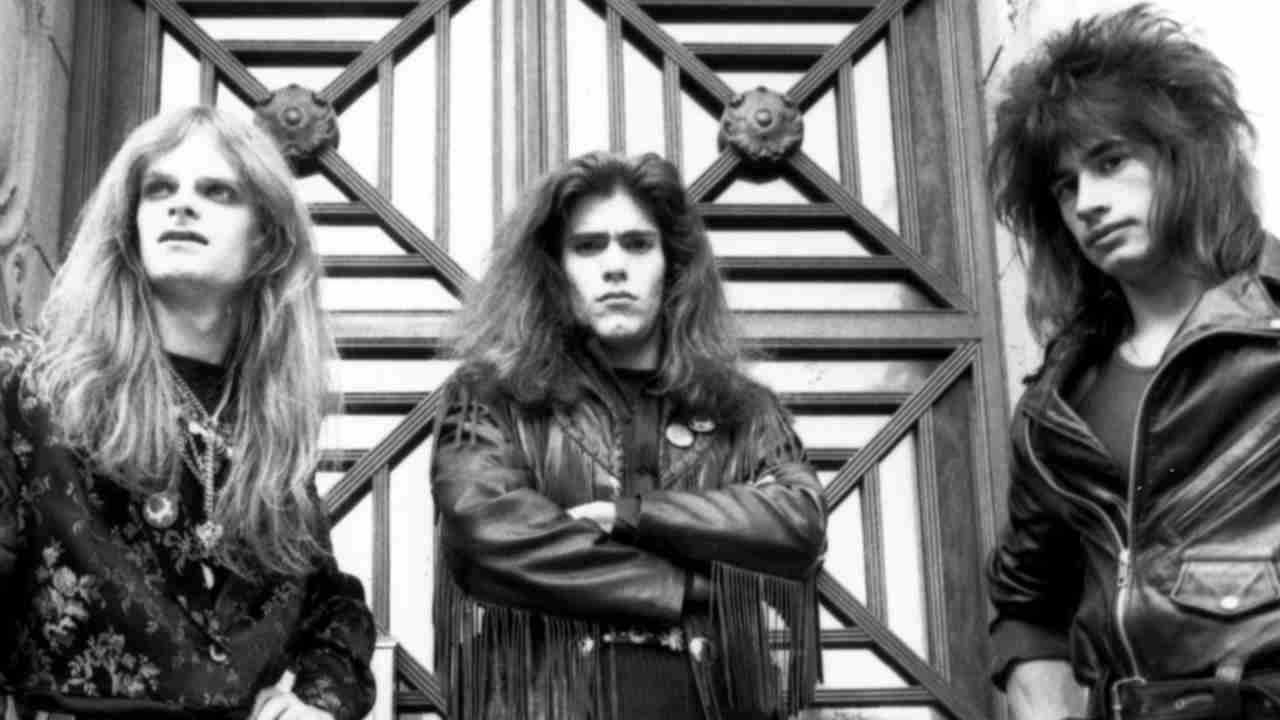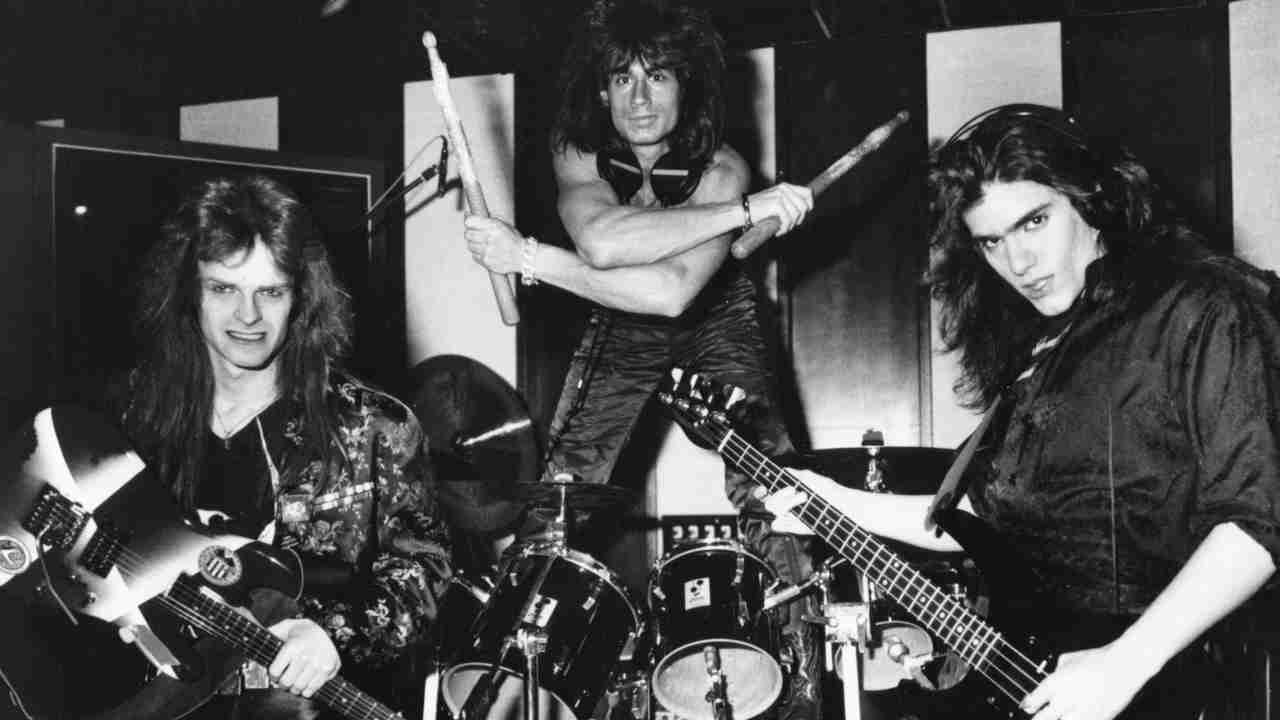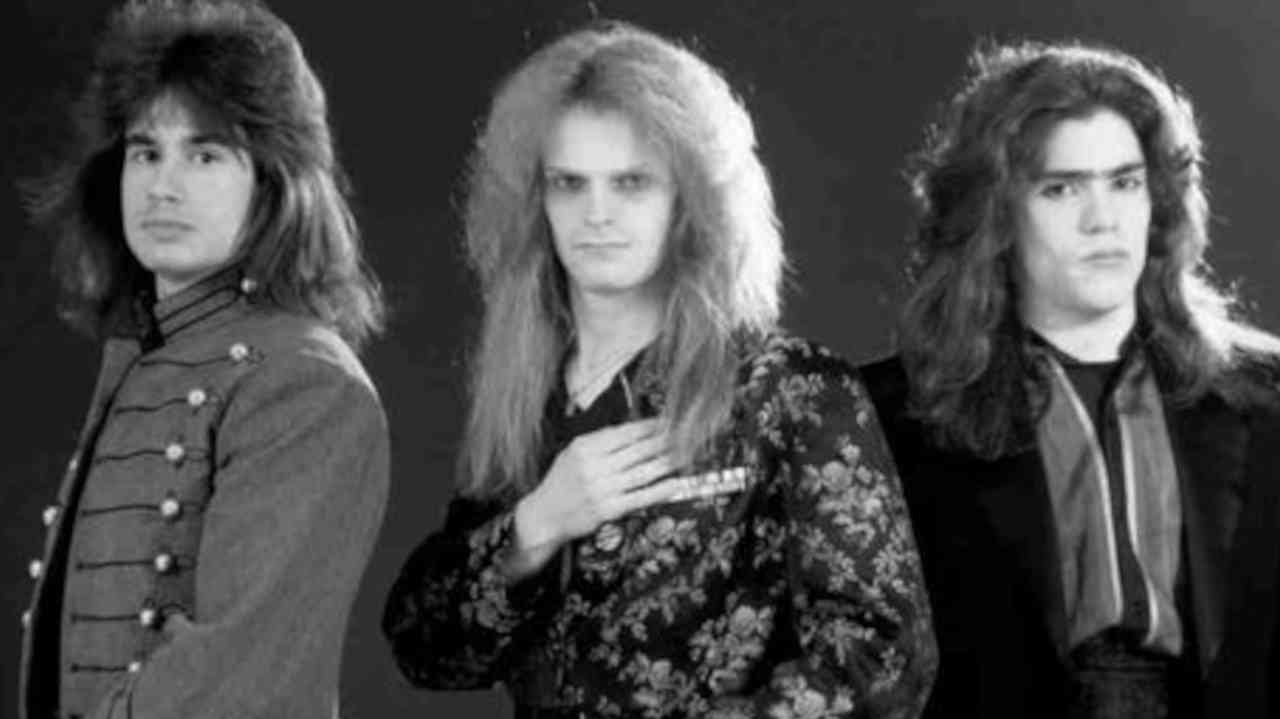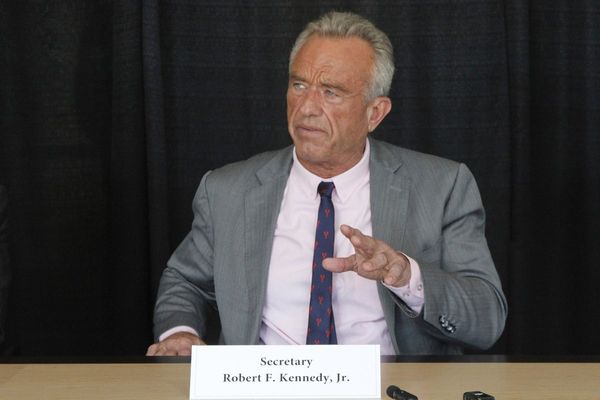
Released in 1987, Celtic Frost’s Into The Pandemonium remains one of the most adventurous albums to be released by a metal band. In 2005, singer and guitarist Thomas Gabriel Fischer revisited the pain and agonies of making an avant garde metal masterpiece.
It took six months to write, four months to record, was peppered with constant arguments between the band and almost everybody around them, and ultimately led to the demise of the band. But Into The Pandemonium, the third album from Swiss mavericks Celtic Frost, changed everything for them.
Thomas Gabriel Fischer, aka Tom G. Warrior, was the band’s spine and nerve centre. He recalls the turbulent circumstances around the making of their most feted album with mixed feelings, though he’s in no doubt what so ever about the crucial nature of the record itself.
“We were sure we had gone too far with our experiments,” explains the guitarist and singer. “We’d didn’t know where we were going. But this was the album that single handedly made Celtic Frost. It’s the band’s most important release.”
Celtic Frost were formed in 1984. They evolved from Fischer’s previous band, extreme metal pioneers Hellhammer. Joining Fischer were Swiss-American bassist and fellow Hellhammer refugee Martin Eric Ain, plus drummer Stephen Priestly. The trio recorded the band’s debut album, Morbid Tales, which was released by German label Noise Records in late 1984.
Priestly didn’t last long and was replaced by American drummer Reed St. Mark for 1985’s mini album Emperor’s Return. There was another disturbance in this Celtic Frost line-up – one of many throughout their career – when Ain was briefly displaced by Dominic Steiner, who played on 1985’s extreme metal classic To Mega Therion. Ain swiftly returned for the following year’s Tragic Serenades EP.
But it was with Into The Pandemonium that the trio stepped away from the death metal caucus, taking both themselves and the genre into unchartered and turbulent waters. The songs they were writing for the new album went far beyond the boundaries of metal. They brought in cello, viola, violin and a female vocalist for the proto-symphonic metal song Tristesses De La Lune, covered the song Mexican Radio by oddball LA new wave band Wall Of Voodoo, introduced R&B-style backing vocals on I Won’t Dance and even dabbled in primitive industrial hip hop on One The Pride. And then there were Fischer’s vocals, which interspersed his instantly recognisable death grunts with distinctive, unsettling moans. most notably on Mesmerized.

“You have to understand that we were always an extreme band,” recalls Fischer. “In fact, when Noise Records signed us they said, ‘We want the most extreme band in the world, and you guys are it.’ What they didn’t realise was how extreme we really were. Martin and I had so many influences that we were determined to incorporate into our music. In fact, from the start we had a game plan for the band. Celtic Frost would do three albums, and that’s it. We had the basis worked out for all of them – even some song titles! – lyrical ideas and artwork concepts. That’s how far-reaching we were.
“The other thing you must understand is that when we began to work on Into The Pandemonium, we were still just kids, and it had been less than two years since Hellhammer had split up. That band was very dismal and ultra heavy, but so far removed from our vision for Frost. So, things had happened really fast.”
In a taste of what was to come, the band locked horns with Noise from the very beginning of writing sessions. The label wanted Celtic Frost to play safe, which was the last thing Celtic Frost themselves wanted to do.
“They wanted us to play safe. What they were after was a Slayer or an Exodus album,” says Fischer. “Just another thrash metal record. No way could we do that. We always took chances, and always will. The day that we compromise on what we do is the day we completely give up. We have to take risks – it’s what drives us. At the time, Metallica were still a little way from becoming mainstream, thrash was a very young concept. Any band trying to make their way in this area of music was expected to be obvious, and to conform. We went against everything. We wanted to do an album that brought in goth, dance, electronica, as well as our metal influences. For Noise that was rather frightening.”
“They heard what we were trying to do, and freaked out. The arguments got so bad that in the end the financial and mental pressure on the band led to us splitting up. It got that horrible. Now I can perhaps appreciate their viewpoint a little more, because we were really going for something so different it was scary. At the time, though… it was war!”
The band didn’t want to self-produce the album, believing that their inexperience would go against them. The boldness of the concept called for a producer who understood both their philosophy and could bring it to fruition in the studio. They drew up a short list of potential producers, including Rick Rubin (“before he became a household name”), and Michael Wagener (“who’d had a lot of commercial success – we liked the sounds he got”), but every advance met with a brick wall.
“Noise told us that everyone they’d approached had either turned it down, or wasn’t available. I still don’t know if that really was the case, but we ended up producing the record ourselves, which wasn’t what we wanted at all. We got in Arabian musicians, an orchestra, an opera singer… and they were being directed by three kids with precious little experience. Not ideal at all.”
The whole recording process took nearly four months, and the already strained relations between the band and label were deteriorating to the point of no return. The fact that the band were stubbornly determined to pursue their own creative path didn’t help relationships with the label. Opening the album with that leftfield cover of Wall Of Voodoo’s Mexican Radio was a case in point.
“Why did we do it? Because both Martin and I loved that band and that song,” says Fischer. “Reed fought against us doing it, and it took four takes to get it right. After the third one, I was ready to give up and scrap the whole idea, but we went for one more – and it was exactly how we wanted it. Originally, it was going to be a bonus song, but came out so well we decided to start off the album with it. I think it confused a lot of people who just expected the usual diet of thrash and heaviness from us. That was in there, but we were determined to make a statement from the beginning.”
Noise Records, who had signed the band in the hope of capitalising on the burgeoning popularity of thrash, were beyond unimpressed with the completed album.
“I vividly recall that, when we finished the record, people from the company came down to hear it,” says Fischer. “I will never forget the looks of horror on their faces. They didn’t understand what we’d done, and saw it as commercial suicide – which I suppose it was. The phrase ‘put the album on ice’ was used by Noise at the time. They couldn’t afford to scrap it, because comparatively too much money had been spent on it. But marketing budgets, for a video and advertising, just disappeared overnight. Noise did try as hard as they could to interfere artistically, but we held firm. There was no way we were gonna change a thing. For years I was bitter and resentful of their attitude, but now I’m not so vengeful. I’ve moved on. I don’t hold any grudges against them.”
The album was released on June 1, 1987, and was hailed as an instant classic by those who were tuned into the underground – the phrase ‘avant garde metal’ was coined to describe it. But its genius didn’t translate into mainstream recognition – Celtic Frost were too far out there for all but the most open-minded metal fan. This writer spent time with the band at Ain’s flat in Zurich around the album’s release, and they were bemused and angry at their situation.
“I don’t know if this band can exist for much longer,” a depressed Fischer explained at the time. “We are so proud of what we’ve achieved, but maybe the world isn’t ready for a band who adore Dead Can Dance and Wall Of Voodoo as much as Slayer and Metallica.”

Their mood wasn’t helped by the fact that Noise refused to finance a tour in support of the album – Fischer says that the band’s own manager stumped up the money. “Everything that surrounded the record was just a nightmare. And it eventually got to us,” he says. “We split up on stage in Dallas in December of 1987. Perhaps if we’d been a little older, wiser heads may have prevailed and we may have gotten through all the troubles. But we were still so young, the whole business destroyed us.”
Fischer re-activated a new incarnation of band (without Ain and St Mark) for 1988’s controversial Cold Lake album, a record despised by the frontman to this day. That was followed by 1990’s Vanity/Nemesis, which saw Ain returning to the fold. The band split three years later, but Fischer and Ain reunited under the Celtic Frost banner in 2001, releasing the 2006 comeback album Monotheist, before splitting once again in 2008, seemingly for good (Ain passed away in 2017 at the age of 50).
The pain of making Into The Pandemonium clearly lingers for Fischer, but with hindsight, he can appreciate the positive aspects of the album alongside the negative ones.
“I am so proud of what we did,” he says. “And to some extent it was this combination of innocence and arrogance that drove us to do what we did. The day we lose our innocence will be the day we give up making music. But we did make mistakes in the studio – this is not a perfect album. One In Their Pride, for instance, went too far.
“I can listen back now, and hear where we went wrong. But what matters is the overall atmosphere and vision. If you think back to the albums being made at the time, nobody was pushing as hard as we were. It was insane and it could have been a disaster, but we pulled off something fantastic. Bands with 10 times our budget weren’t making albums that had 10 percent of our innovation.”
It may have been a traumatic experience for the band who made it, but Into The Pandemonium has become one of the most influential metal records of the 80s. Everyone from Darkthrone and Dimmu Borgir to Nirvana – who used to listen to it in their tour van – has held it up as an inspiration. But back in 1987, shortly after the release of Into The Pandemonium, Celtic Frost weren’t sure if they had any future at all. Yet even then Fischer was defiant.
“If this is our last record, I think history will judge us as doing something that will make its mark. I know in 20 years’ time, people will be talking about this,”
All these years later, he’s been proved right.
Originally published in Metal Hammer issue 144. Updated August 2024







